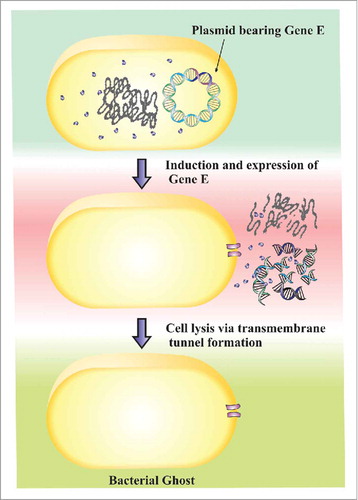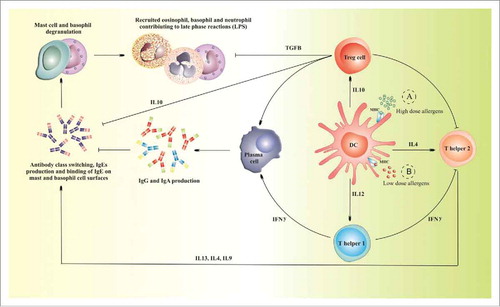Figures & data
Figure 1. Formation of Bacterial Ghosts Controlled expression of gene E leads to the lysis of bacteria and formation of a transmembrane tunnel spanning through the inner and outer membrane of bacteria. It is through the trans-membrane tunnel that the bacterial cell contents are expelled.

Figure 2. Schematic representation of BG-mediated surface display of allergens on Gram-negative cells. Cells are co-transformed with 2 plasmids, in which one harbors allergens under the control of a suitable promoter while the other plasmid carries protein E. Allergen bearing plasmid is induced to express the allergen/ hypoallergens first followed by the expression of lysis gene E, leading to the formation of BGs displaying allergens.

Figure 3. The downregulation mechanisms of allergen immunotherapy using allergens entrapped into BGs When high allergen doses (green dots, A) are taken up by APCs via BG-mediated allergen immunotherapy, DCs in particular produce IL-12 which stimulates naive Th0 cell to differentiate and favor skewing of the immune response from a pro-inflammatory Th2 to a Th1-driven one. This is followed by an increase in the ratio of Th1 cytokine profile as well as an induction of Treg cells and regulatory cytokines (IL-10). Furthermore, BG-mediated allergen immunotherapy leads to the production of allergen-specific IgGs that inhibit IgEs from binding onto mast and basophil cell surfaces. On the other hand, low dose (red dots, B) and repeated exposure to natural allergens via mucosal surfaces leads to a Th2-driven allergic response.

